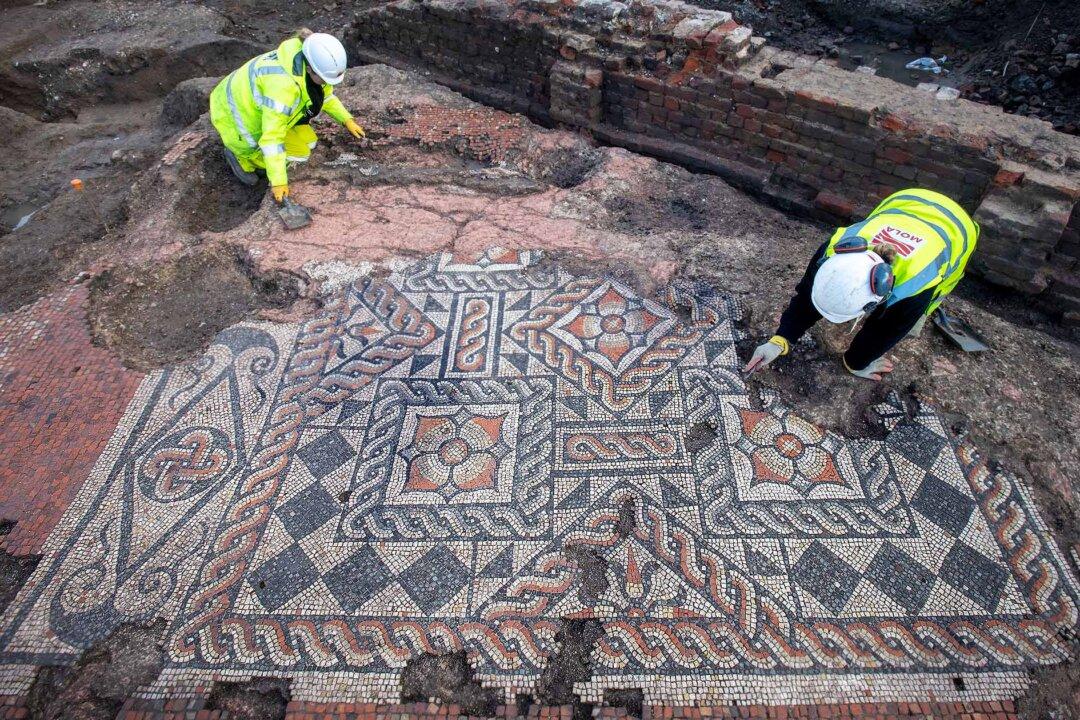Piercing the soil in the heart of downtown London, a team of archaeologists uncovered Roman artwork from the ancient past, amidst the construction and community developments near The Shard.
The city’s largest Roman mosaic found in 50 years was unearthed as part of a heritage conservation excavation by Museum of London Archaeology (MOLA) archaeologists.






